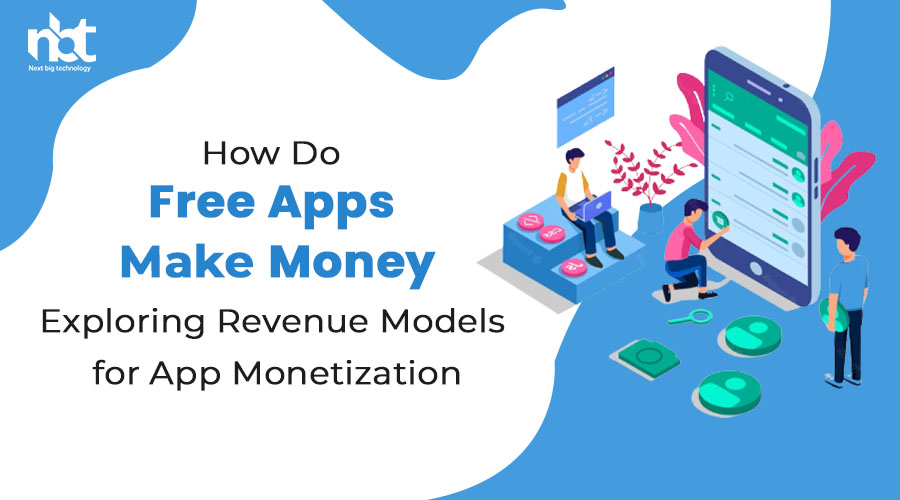Introduction: In today’s app-dominated world, free apps have become incredibly popular among users. But have you ever wondered how these apps manage to generate revenue despite being free to download? In this blog, we will explore the various strategies and revenue models that free apps employ to monetize their offerings. Understanding these monetization techniques will shed light on how app developers can offer free apps while still ensuring profitability and sustainability.
- In-App Advertising: One of the most common ways free apps generate revenue is through in-app advertising. This involves displaying ads within the app interface, either as banners, interstitials, native ads, or video ads. App developers partner with ad networks or advertisers who pay to show their ads to the app’s user base. Revenue is generated based on the number of ad impressions or clicks. Popular ad networks include Google AdMob, Facebook Audience Network, and Unity Ads.
- Freemium Model: The freemium model combines free features with additional paid features or premium content. The app offers a basic version for free, enticing users to upgrade to a premium version by paying for advanced functionalities, exclusive content, or enhanced user experiences. This model allows users to experience the app’s core features at no cost while providing an opportunity to monetize through premium upgrades. Examples of freemium apps include Spotify, Evernote, and Dropbox.
- In-App Purchases: In-app purchases (IAPs) enable users to buy virtual goods, digital content, or additional features within the app. This model is often used in gaming apps, where users can purchase items, power-ups, or unlock levels to enhance their gaming experience. Apps may also offer subscriptions or access to exclusive content for a fee. Examples of apps using this revenue model include Candy Crush Saga, Tinder, and Netflix.
- Sponsorships and Partnerships: Free apps can leverage sponsorships and partnerships with brands or businesses to generate revenue. This involves collaborating with companies that align with the app’s target audience and offering them advertising opportunities or promotional space within the app. Sponsorships may involve product placements, sponsored content, or exclusive deals. This revenue model works well for apps with a large user base and niche audience.
- Data Monetization: Some free apps collect user data and leverage it for targeted advertising or market research purposes. By analyzing user behavior, demographics, or preferences, app developers can offer personalized ads to users or sell anonymized data to third parties. Data monetization should be done with transparency and user consent, adhering to privacy regulations and guidelines.
- Affiliate Marketing: Affiliate marketing involves promoting products or services within the app and earning a commission for each successful referral or sale. App developers partner with affiliate networks or individual brands to promote their offerings through banners, links, or discount codes. This revenue model is commonly seen in shopping and review apps, where users can make purchases directly from the app.
- Crowdfunding: In some cases, free apps rely on crowdfunding platforms to generate revenue. App developers pitch their app idea to potential users and request financial support in exchange for early access, exclusive features, or special perks. Crowdfunding can help fund app development and establish a dedicated user base from the start.
- Licensing and White Labeling: Certain free apps offer their technology or infrastructure as a white-label solution for other businesses. They license their app’s underlying framework, software, or APIs to other companies that can rebrand and customize it for their own purposes. This allows app developers to generate revenue by selling licenses or charging for customization and maintenance services.
- Donations: Some free apps provide an option for users to make voluntary donations to support the app’s development and ongoing maintenance. This model is often used by apps that provide valuable content, open-source tools, or rely on community support. It relies on the goodwill of users who appreciate the app’s value and are willing to contribute financially.
- Government Grants and Subsidies: In certain cases, free apps may receive government grants or subsidies to support their development. These grants are often provided to apps that contribute to societal or public welfare goals, such as healthcare, education, or environmental initiatives. The aim is to encourage innovation and make valuable apps accessible to the public at no cost.
Conclusion: Free apps have revolutionized the way we use mobile devices, and their popularity continues to grow. While they are free to download, these apps employ various revenue models to ensure profitability and sustainability. In-app advertising, freemium models, in-app purchases, sponsorships, data monetization, affiliate marketing, crowdfunding, licensing, donations, and government grants are among the key strategies employed by free apps to generate revenue. App developers must carefully consider the target audience, app’s niche, and user experience to determine the most suitable monetization strategy. By understanding these revenue models, app developers can create sustainable business models that balance user satisfaction and financial success in the dynamic app market.










